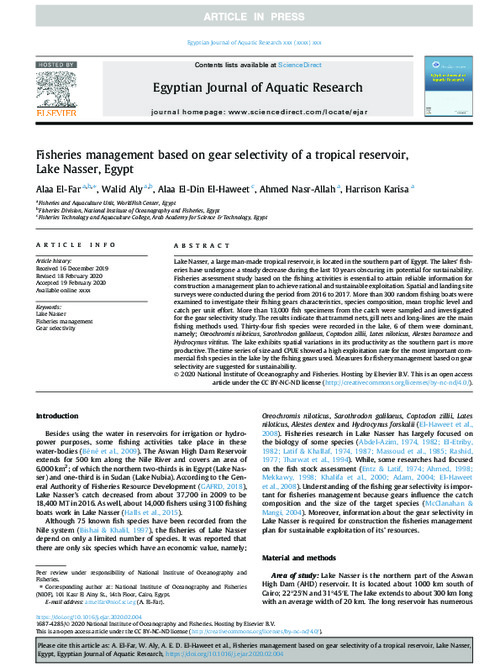Fisheries management based on gear selectivity of a tropical reservoir, Lake Nasser, Egypt
Abstract
Lake Nasser, a large man-made tropical reservoir, located in the southern part of Egypt. The lakes’ fisheries have undergone steady decrease during the last 10 years obscuring its potential for sustainability. Fisheries assessment study based on fishing activity is essential to attain a reliable information for construction a management plan for rational and sustainable exploitation. Spatial and landing sites surveys were conducted during the period 2016-2017. More than 300 random fishing boats were examined to investigate their fishing gears characteristics, species composition, mean trophic level and catch per unit effort. More than 13000 fish specimens from the catch were sampled and investigated for gear selectivity study. The results indicate that trammel net, gill net and long-line are the main fishing methods used. Thirty-four fish species were recorded in the lake, 6 of them dominant; Oreochromis niloticus, Sarothrodon galilaeus, Coptodon zillii, Lates niloticus, Alestes baramoze and Hydrocynus vittitus. The lake exhibits spatial variation in productivity with the southern part being more productive. The time series of size and CPUE showed high exploitation rate for most important commercial fish species in the lake by the fishing gears used. Measures for fishery management based on gear selectivity are suggested for sustainability

